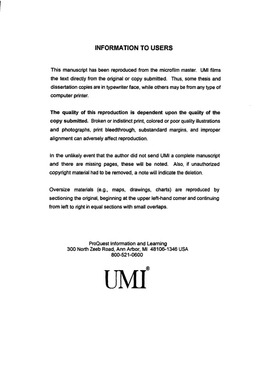| dc.contributor.advisor | Suflita, Joseph M., | en_US |
| dc.contributor.author | R√≠-hern√ʻez, Luis A., | en_US |
| dc.date.accessioned | 2013-08-16T12:18:56Z | |
| dc.date.available | 2013-08-16T12:18:56Z | |
| dc.date.issued | 2003 | en_US |
| dc.identifier.uri | https://hdl.handle.net/11244/586 | |
| dc.description.abstract | In this thesis, I examine the microbial degradation of an alicyclic hydrocarbon and the intermediates of benzoate decay under anaerobic conditions. Ethylcyclopentane was chosen as a model alicyclic hydrocarbon because GC analysis of contaminated core samples suggested that ECP was depleted relative to other hydrocarbons present in the gas condensate (a hydrocarbon mixture). This observation suggested that ECP might have been biologically attenuated in this aquifer in a manner similar to that previously demonstrated for BTEX hydrocarbons by other researchers. I obtained a bacterial enrichment which could mineralize ECP coupled to the reduction of sulfate in stoichiometrically expected amounts. In addition, I was able to propose a pathway for the degradation of this alicyclic hydrocarbon based on the identification of various transient metabolites produced during biodegradation. Furthermore, I describe the organisms in the ECP-degrading enrichment by denaturing gradient gel electrophoresis (DGGE) using a portion of the 16S rDNA gene. This study suggests that alicyclic hydrocarbons such as ECP can be anaerobically activated by the addition to the double bond of fumarate to form alkylsuccinate derivatives under sulfate-reducing conditions and that the reaction occurs in the laboratory and in hydrocarbon-impacted environments. | en_US |
| dc.description.abstract | Using the same hydrocarbon-impacted sediments known to harbor microorganisms able to degrade aromatic hydrocarbons via benzoate, I isolated a cyclohexane carboxylate-degrading, sulfate-reducing bacterium. The isolate can grow heterotrophically with short chain fatty acids and two key intermediates in the degradation of benzoate, but not with benzoate itself or with BTEX hydrocarbons. Autotrophic growth was observed with various sulfur oxyanions and fumarate as terminal electron acceptors. The bacterium is a Gram-negative, non-sporeforming, non-motile, non-dehalogenating large rod with a collar-like morphology. I propose a degradation pathway for the decay of cyclohexane carboxylate by identifying transient metabolites formed during degradation. The morphology, physiology and 16S rRNA gene partial sequence suggests that this isolate is a new species of the genus Desulfomonile. Unlike the other known Desulfomonile species, this organism was not able to dehalogenate 3-chlorobenzoate. We proposed that this isolate be named Desulfomonile liminquinati. (Abstract shortened by UMI.) | en_US |
| dc.format.extent | xvi, 98 leaves : | en_US |
| dc.subject | Environmental Sciences. | en_US |
| dc.subject | Aromatic compounds. | en_US |
| dc.subject | Biology, Microbiology. | en_US |
| dc.subject | Hydrocarbons Biodegradation. | en_US |
| dc.subject | Biodegradation. | en_US |
| dc.subject | Alicyclic compounds. | en_US |
| dc.title | The anaerobic biodegradation of ethylcyclopentane and intermediates of benzoate metabolism by microorganisms from a hydrocarbon-contaminated aquifer. | en_US |
| dc.type | Thesis | en_US |
| dc.thesis.degree | Ph.D. | en_US |
| dc.thesis.degreeDiscipline | Department of Microbiology and Plant Biology | en_US |
| dc.note | Source: Dissertation Abstracts International, Volume: 64-03, Section: B, page: 1082. | en_US |
| dc.note | Adviser: Joseph M. Suflita. | en_US |
| ou.identifier | (UMI)AAI3082943 | en_US |
| ou.group | College of Arts and Sciences::Department of Microbiology and Plant Biology | |
